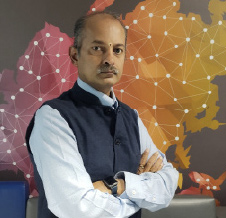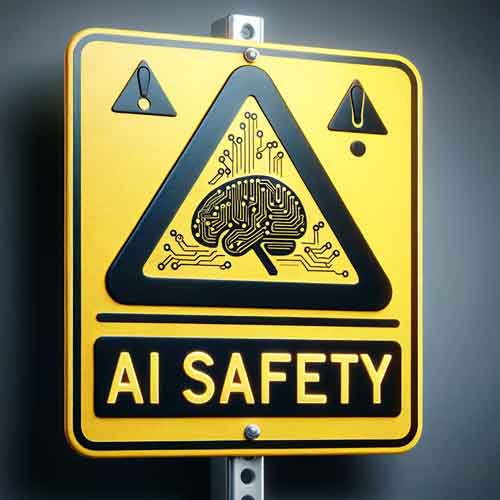
By Varsha Rammohan, Senior Enterprise Analyst, ManageEngine
The tech industry's AI and sustainability promises face a challenge as AI’s energy consumption soars. In 2022, data centers, AI, and cryptocurrency used 460 TWh of electricity—2% of global demand—set to double by 2026. Critics question whether AI’s sustainability claims are real or just PR. However, AIOps (Artificial Intelligence for IT Operations) offers a solution by integrating real-time carbon tracking and automation, making sustainability measurable. Companies must now prove their AI is green, not just claim it.
The tech industry's grand promises about AI and sustainability have hit a wall. While organizations are actively discussing the role of AI solutions in tackling climate change, the technology itself consumes a staggering amount of energy. According to the International Energy Agency, data centers, AI, and cryptocurrency collectively consumed 460 terawatt-hours (TWh) of electricity in 2022—about 2% of global demand. By 2026, this number is expected to more than double to 1,000 TWh, surpassing the annual electricity consumption of entire countries like Germany or Japan.
This situation has led to growing scrutiny, with some questioning whether AI's sustainability efforts genuinely reduce environmental impact or merely serve as a strategic narrative for organizations keen on PR. Amidst this crisis of credibility, a solution is emerging from an unexpected quarter: artificial intelligence for IT operations (AIOps). By embedding real-time carbon tracking and automated optimization directly into IT infrastructure, AIOps is transforming sustainability from a marketing buzzword into a measurable metric. For the first time, companies can't just claim their AI is green—they have to prove it.
The hidden cost of green AI
Beyond the staggering electricity consumption, the true environmental cost of AI extends deeper into our infrastructure. Each new breakthrough in AI capability demands more powerful hardware, more extensive training runs, and more complex deployments. The demand for bigger AI models has intensified a global chip shortage, caused by supply chain problems, energy demands of large-scale computing, and geopolitical issues. Even cloud providers' claims of running on renewable energy often mask the reality that peak AI workloads force them to fall back on fossil fuel sources during high-demand periods.
This gap between intention and impact underscores a systemic issue: without tools to measure, verify, and mitigate AI's footprint, even well-meaning initiatives become performative.
AIOps: A bridge between promises and progress
AIOps platforms, originally designed to streamline IT operations, are evolving into indispensable tools for climate accountability. By integrating environmental metrics into their analytics, these systems offer three transformative capabilities:
● Real-time carbon tracking: Modern AIOps platforms provide granular insights into emissions at the workload level, identifying carbon-intensive applications and processes. By integrating with energy meters, cloud providers, and sensors, they calculate emissions using models like the Greenhouse Gas Protocol. This enables businesses to take immediate action — from reallocating resources and shifting to renewable-powered data centers to using low-power modes. Financial institutions, for instance, can compare emissions from traditional data centers and cloud alternatives, making data-driven decisions to migrate high-impact workloads to greener infrastructure.
● Automated carbon offsetting: Beyond diagnostics, AIOps can trigger actions. While fully automated carbon offset purchasing remains an aspiration, current platforms provide sophisticated emissions tracking that facilitates strategic offset decisions. Tools like Microsoft’s Azure Emissions Impact Dashboard and Google Cloud’s Carbon Footprint provide detailed emissions data, empowering companies to make informed choices. Microsoft's commitment to becoming carbon negative by 2030 exemplifies how organizations can leverage these insights to drive impactful sustainability initiatives.
● Code-level efficiency audits: AIOps tools analyze software for energy inefficiencies, flagging resource-heavy code that consumes excessive computing power. These systems can detect poorly optimized algorithms, redundant loops, or inefficient database queries, helping developers refine their applications for sustainability. For example, Microsoft CodeCarbon analyzes code for energy-draining patterns and provides developers with actionable feedback.
By integrating tools like this into the DevOps pipeline, companies can ensure that sustainability becomes a core consideration in every stage of software development.
The transparency mandate
For AIOps to legitimize the tech industry’s climate efforts, companies should adopt radical transparency. This starts with disclosing the energy use of AIOps platforms themselves—after all, if the tool meant to reduce emissions consumes excessive energy, it becomes part of the problem. Additionally, demystifying algorithms is critical; black box tools erode trust, so adopting open-source frameworks or explainable AI (XAI) principles ensures stakeholders understand how decisions—like carbon offset purchases are made.
Finally, while automation is powerful, human oversight remains essential. Teams should review AIOps recommendations to ensure they align with both environmental goals and operational realities, striking a balance between efficiency and ethics.
How organizations can incorporate AIOps into IT sustainability practices
● Assessing current IT carbon footprint: Conduct a comprehensive sustainability audit to identify high-energy consumption areas and set benchmarks for improvement.
● Implementing AIOps tools: Choose AIOps platforms with built-in carbon tracking, intelligent workload optimization, and automated offset capabilities to streamline energy efficiency efforts.
● Setting clear sustainability goals: Define quantifiable emissions reduction targets that align with overall IT strategy and environmental policies.
● Monitoring and adapting: Continuously analyze AIOps insights to refine policies, optimize energy use, and integrate sustainability best practices across IT operations.
● Ensuring transparency and compliance: Regularly publish detailed sustainability reports, ensure compliance with global environmental regulations, and communicate progress to stakeholders.
The path forward is clear: organizations should move beyond treating environmental impact as a marketing exercise and embed sustainability into their operational DNA. AIOps provides the framework for this transformation, but ultimately, it's up to tech leaders to prove they're serious about bridging the gap between green promises and genuine progress.
See What’s Next in Tech With the Fast Forward Newsletter
Tweets From @varindiamag
Nothing to see here - yet
When they Tweet, their Tweets will show up here.




























